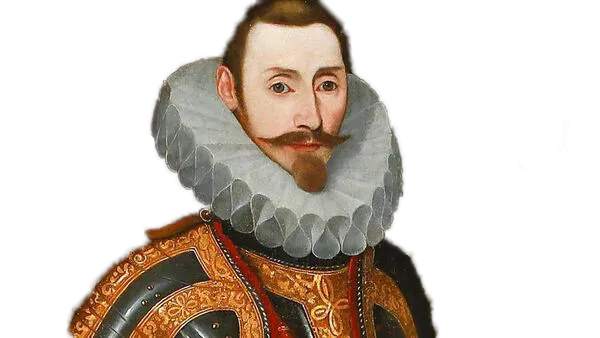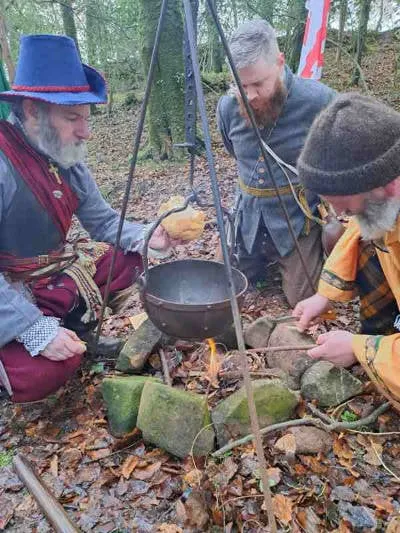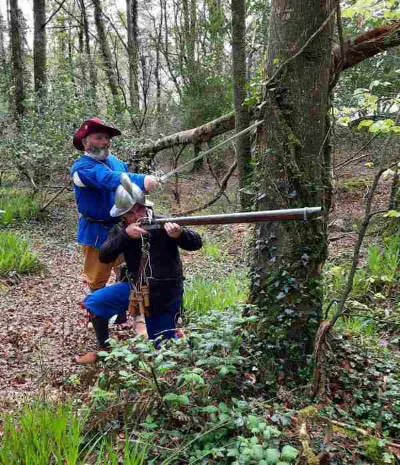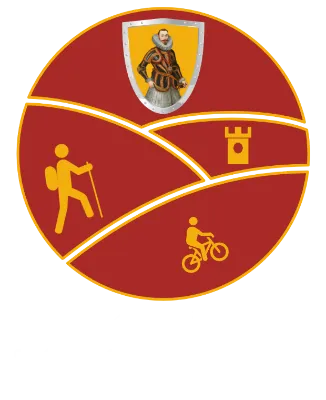O'Sullivan Beare History
A short history of Donall Cam O'Sullivan Beare
Image use by kind permission of The Last Prince - O Sullivan Beare
Donall Cam O'Sullivan Beare
Donall Cam O'Sullivan Beare was an Irish nobleman and soldier who held the title of last independent Chief of the Name of Clan O'Sullivan. As Lord of the Beara Peninsula in the southwest of Ireland during the early seventeenth century, he lived during a time when the English Crown was attempting to secure their rule over the whole island.
Donall's father was killed in 1563, but he was too young to inherit the clan's leadership. It went to his uncle Eoin, who was confirmed by Dublin Castle with the title Lord of Beare and Bantry. To solidify his position, Eoin accepted Queen Elizabeth I's authority and was knighted as Sir Eoin.
In 1587, Donall claimed leadership of the clan based on English laws of absolute male primogeniture. These laws did not consider age as relevant to inheritance rights. The Dublin Castle administration accepted Donall's claim to extend English legal authority over Ireland. As a result, he became The O'Sullivan Beare, head of the clan.

The Nine Year's War
By the year 1600, the province of Munster had suffered from significant damage due to conflict, resulting in Irish Catholics losing more than 500,000 acres of land to Protestant settlers after the Desmond Rebellions were defeated.
Prior to the Nine Years' War, O'Sullivan kept his distance from the rebel cause. He eventually joined a confederation of Gaelic chiefs, led by Hugh O'Neill, An Ó Néill, and Red Hugh O'Donnell, An Ó Domhnaill, of Ulster. Conflict began in 1594 and Tyrone received support from Philip II of Spain.
A Spanish army under Don Juan D'Aquilla arrived in 1601 and O'Sullivan submitted to Spanish rule in a letter to the king but it was intercepted by the English. The allied Irish and Spanish forces encountered an English force at the Battle of Kinsale in early 1602 where they were ultimately beaten.
O'Sullivan made the decision to take control of Dunboy castle to continue the fight. In June 1602, English troops attacked the castle, resulting in a short siege and the defeat of the defenders. All of them were either killed in the battle or executed afterwards.
Donal was not present during the siege of Dunboy. He went to Ulster for a conference with Tyrone. His letter to Philip II did not give him much hope of a pardon from the English. He continued fighting using guerilla tactics. He held onto Dursey Island, which was attacked by an English detachment led by George Carew. Carew's men killed all 300 people in the stronghold, including women and children.
This became known as the Dursey Island massacre. After Dursey and Dunboy fell, O'Sullivan Beare gathered his followers and started a 500-kilometre march with 1,000 people. He hoped to meet Lord Tyrone at Lough Neagh.
O'Sullivan Beare's March
He fought a long battle in Ireland, moving north through Munster, Connacht, and Ulster. The English force and their Irish allies pursued him the whole way, despite being much larger. The march was difficult for the O'Sullivans, who were hungry and fleeing through a countryside already decimated by winter. They often encountered hostile people, like the Mac Egans at Redwood Castle and in Donohill, where they raided The 10th Earl of Ormond's food store. O'Sullivan raided villages and faced resistance in Aughrim.
He couldn't enter Glinsk Castle, so he led his refugees north. After two weeks of marching and fighting, only 35 of the original 1,000 remained when they arrived at Brian Oge O'Rourke's castle in West Breifne on January 14, 1603. Many died from battles, exposure, and hunger, while others fled or found shelter. O'Sullivan Beare traveled over 500 kilometers, crossed the River Shannon in the dark, built a boat from skin and hazel rods to transport 28 people at a time, and lost most of his people due to the hardships of the journey.
In County Leitrim, O'Sullivan Beare organized a force with the aim of launching a campaign against the English Crown. However, the resistance ended when Tyrone signed the Treaty of Mellifont. O'Sullivan, along with other members of the Gaelic nobility of Ireland, fled and sought exile. He made his escape by ship and ended up in Spain. The Beara-Breifne Way long-distance walking trail follows the historical march route closely.
After leaving Ireland, Cornelius O'Driscoll and other Irish knights provided assistance to O'Sullivan Beare and his clan. Upon arrival in Spain, O'Sullivan Beare was received by Philip III, where he was confirmed as a prince and granted a commission as an imperial general.
In 1618, The O'Sullivan Beare, who held the titles of Prince of Beare and 1st Count of Berehaven, was killed in Madrid's Plaza de Santo Domingo. The perpetrator, John Bathe, an Anglo-Irishman from Dublin, had been scarred in a duel by the prince's nephew. It was also alleged that Bathe was acting as a spy for the English Crown and had disagreements with O'Sullivan.

Image use by kind permission of The Last Prince - O Sullivan Beare

Image use by kind permission of The Last Prince - O Sullivan Beare

© 2023 In Tipperary, All Rights Reserved.
Web Design by Pixelweb Design
